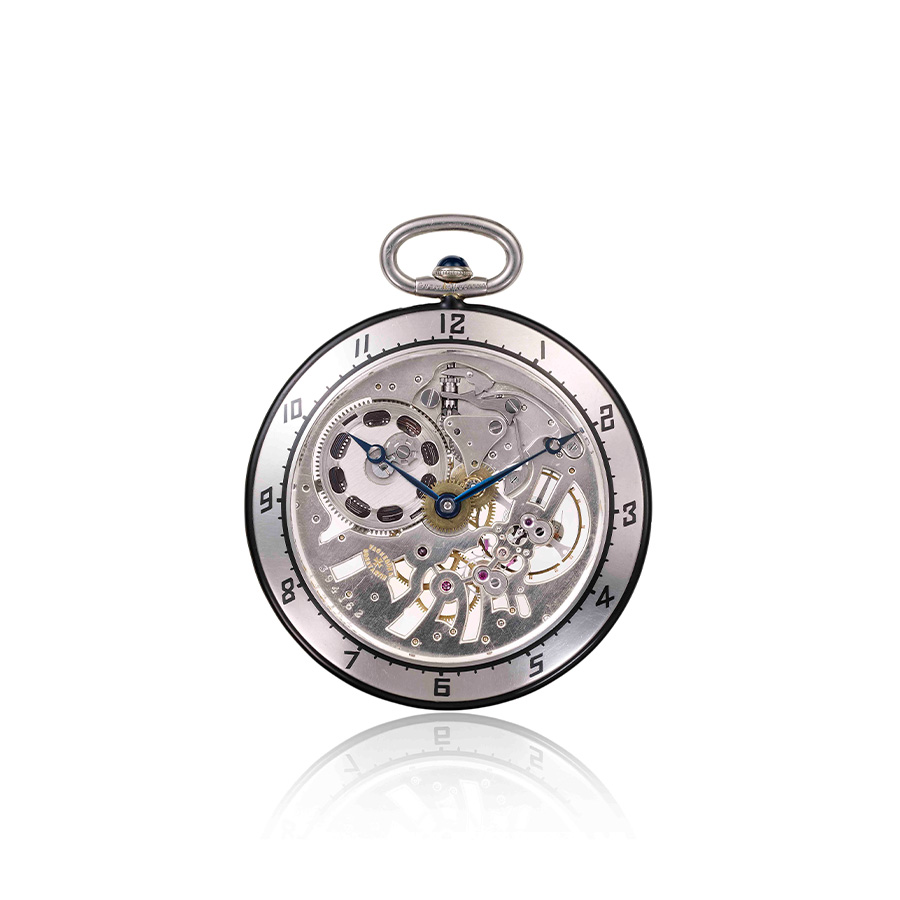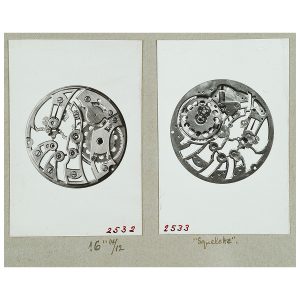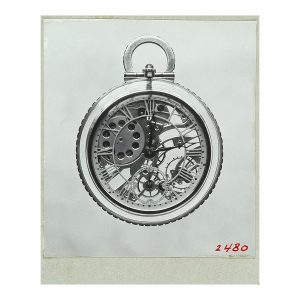
Ref.11131
Manufacturing Year 1926
Round pocket watch, skeleton, in 18K white gold and black enamel, crystal back, 12 enamel Arabic numerals on the bezel, internal enamel timer, crown with onyx cabochon (Verger Frères Case).

Ref.11131
Manufacturing Year 1926
• During the 1920s, the “twist” also found its way into time display. Aesthetics and technical sophistication had to be well matched and, in the manner of haute couture, that which was previously hidden from sight – the mechanical movement – must appear as refined as the immediately visible exterior components.
• In 1924, conscious of the high level of finishing required of its watch components, Vacheron Constantin presented its first so-called skeleton pocket watch. The design follows the trend defined by the period known as Art Deco: a quest for a perfect balance between technical prowess and aesthetic excellence. This led to the play of mechanical transparency made possible by the work of glyptics, or the art of cutting and engraving stone, in this case rock crystal.
• The watchmaker and the engraver openworked and decorated the movement bridges and mainplate in gold, nickel silver or brass.
• At the height of the Art Deco period, these watches would soon become sought-after by jewelers looking to diversify their wares, at a time when watches were increasingly being considered as jewelry pieces and fashion accessories. Thus, these watches entirely adopt the aesthetic codes of the era: the oval ring, animated dials (enamel), movement or cases. In 1933, Vacheron Constantin delivered a skeletonized pocket watch similar to that of King Alexander of Yugoslavia and Serbia.


To witness the creation of a timepiece by inserting its photograph in the catalogue offered to the eyes of the customers shows how notable the achievement is.
What about inserting a photograph of a movement, front and back? This shows how much our customers appreciate the art of skeletonisation for its delicacy and the great mastery shown by our craftsmen.
©2022 Vacheron Constantin All Right Reserved